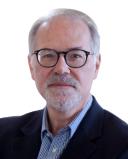Psychology
After Psychology
Our growing recourse to neurobiological explanations is not progress.
Posted June 10, 2020 Reviewed by Gary Drevitch
Since the 1980s a quiet but profound shift has taken place in how ordinary Americans think about the roots of mental health problems, including what might be called everyday suffering. Large population surveys of lay mental health beliefs show a consistent trend over the past few decades toward an ever-stronger endorsement of biological causes. Psychological experiments document the growing hold that “brain” explanations have on people. And studies of popular media demonstrate that high-circulation magazines, health websites, and best-selling autobiographies not only reflect this emergent post-psychological perspective but ringingly endorse it.
Moving away from a faith in psychologically-grounded approaches focusing on personal history and social experiences, we have in the last four decades come to trust almost reflexively in the power of biology, biochemistry, and genetics to fix what ails us. Health-care professionals observing this trend celebrate it as a sign that we have become a more "sophisticated" society about mental health.
But should we really be so thrilled? Among the 80 Americans I interviewed for Chemically Imbalanced, my book exploring how people take up neurobiology to explain personal struggles and grapple with the very nature of selfhood—of who we think we are and what shapes us, I found reasons to be concerned.
To one of those I interviewed, a 27-year-old woman named Hailey, the crisis came the year after college. Living on her own, faced with a new set of day-to-day responsibilities, and uncertain about her future, she constantly felt anxious and self-conscious. Work was especially difficult. Hailey got nervous every time she had to make a phone call, and had trouble meeting new people, chatting with coworkers in the hallways, or going out with them after work. She felt out of place, and apprehensive about the impression she might be making.
Hailey finally decided to seek medical help. From a college psychology course, she already knew a little about social anxiety disorder (SAD). It was considered a common problem and involved “biological processes,” as she puts it, “in terms of dopamine and serotonin.” In fact, before seeing the psychiatrist, she says, “I knew that this [SAD] was my diagnosis” and a prescription was “what I was looking for.”
Once on the medication, she noticed less nervousness but still felt out of sorts. Briefly resorting to a psychologist, she found she “wasn’t really into it” and stopped after a few appointments. The meds, she decided, were the answer, and indeed over time she began to feel more confident and less troubled about what other people thought of her.
Hailey’s experience brought about a transformation in self-understanding. Ever since childhood, she had been shy and self-conscious and thought that was simply what she was like. Not anymore. Her natural personality, she came to believe, had been blocked by a “biological genetic thing” in her brain. In her new view, the drug removed that “blockage,” not only making her feel better but freeing a natural outgoingness that had been concealed there all along. Garrulous and more socially uninhibited on the medication, she felt she was finally herself.
Like Hailey, other people I talked with, ranging in age from 18 to 63, were dealing with a variety of predicaments and many, after being diagnosed, were prescribed a psychiatric medication. Typically, they described their struggles as failures of one kind or another. They couldn’t shake off losses quickly enough or handle social encounters with the ease and confidence they saw in other people or realize their plans and ambitions despite all their hard work. In most cases, they felt that they were less than they could or should be.
To be sure, not all of the interviewees attributed their dilemmas to faulty brain chemistry. Some identified features of their personalities, certain behavioral tendencies, or interpersonal difficulties, as the source of their problems. They also interpreted the positive effects of medication quite modestly, crediting it with restoring emotional stability, boosting their energy, or increasing mental focus. They expected their use of the meds to be fairly short-term.
But the majority of those on medication identified their problem as a malfunctioning brain—a “chemical imbalance.” Like Hailey, they took chemical imbalance to mean that their problems had been brought on by a force outside and apart from themselves. Confident that the threat was external, they were hopeful that, with the continuous aid of medication, they might be free from limitations or impediments to their self-determination in important areas of their lives.
Yet, without understanding so themselves, these people were in quite profound ways abandoning the very sources of their individual agency, sources that are bound up with their personal and social histories—and, most crucially, the meanings they might draw from their uniquely individual experience.
Explaining their predicament primarily as a chemical imbalance, in other words, left people with no reason to seek a fuller picture of their circumstances, of who they are, what moves them, and—critically—by what standards they seek to live. And interpreting struggles largely in terms of glitches in the brain undermined the point of interpersonal dialogue, whether with friends or family or a counselor or therapist. Fears, failures, and a sense of inadequacy—these were not problems that could be discussed in a language of neurochemistry. Treatment was reduced to med checks.
Further, ascribing thoughts, emotions, and behaviors to a chemical imbalance led people to conclude that a failure to conform with specific social ideals—whether easy sociability or constant optimizing of their performance—was a physiological discrepancy that “normal” high-functioning people don’t have. Hailey, for instance, recognizes that “being outgoing and likable” is an ideal “in our society.” Yet in attributing her shyness and anxiousness to biological processes, she treats them not as a socially undervalued personality trait or an expected response to difficult circumstances, but as neurochemical deficits comparable to the glucose metabolism dysfunction of a person with diabetes.
Although certainly challenging, we can face and contest coercive social norms, including the imperative that we be effusive and extroverted. We can live by other values and ways of being, including being shy and reticent. But once our shortcomings and distresses are interpreted in a biological language, we lose the grounds on which to come to terms with who we are in relation to (and often in resistance to) what society demands we be. You don’t resist a chemical imbalance; you try to put it right.
More disturbing, the language of chemical imbalance deprives people’s struggles of any meaning and, therefore, any value. With mind now subordinated to brain, post-psychological selves can find little significance or purpose in their struggles and possibly even less worth in those aspects of themselves that are at odds with the dominant social standards. Hailey’s only regret is that she wasn’t on the drug earlier. While happy with her college experience, she thinks taking medications might have given her the confidence to run for class president.
Deep and rich philosophical, religious, and literary traditions, from Sophocles to Dostoyevsky to Edith Stein, see in suffering the road to self-understanding and the apprehension of important truths about the human condition. But from thinking of ourselves as broken mechanisms, as so many today attest, we conclude, sadly, that there is little to be learned.




